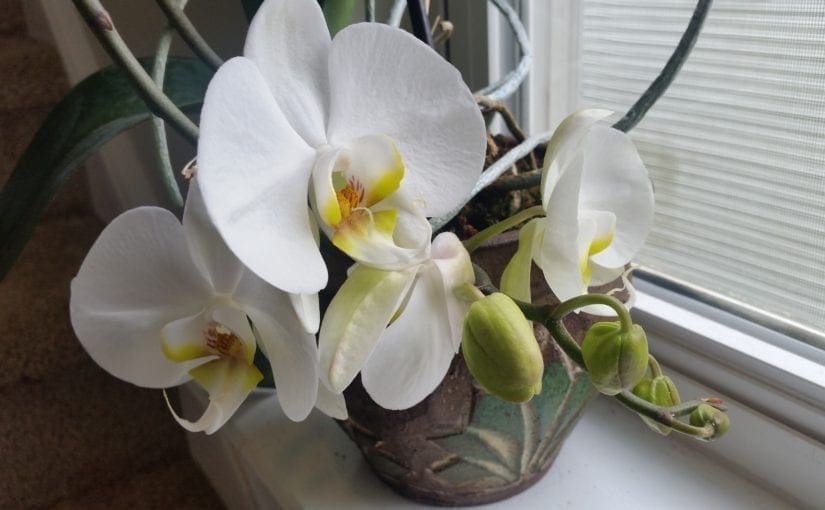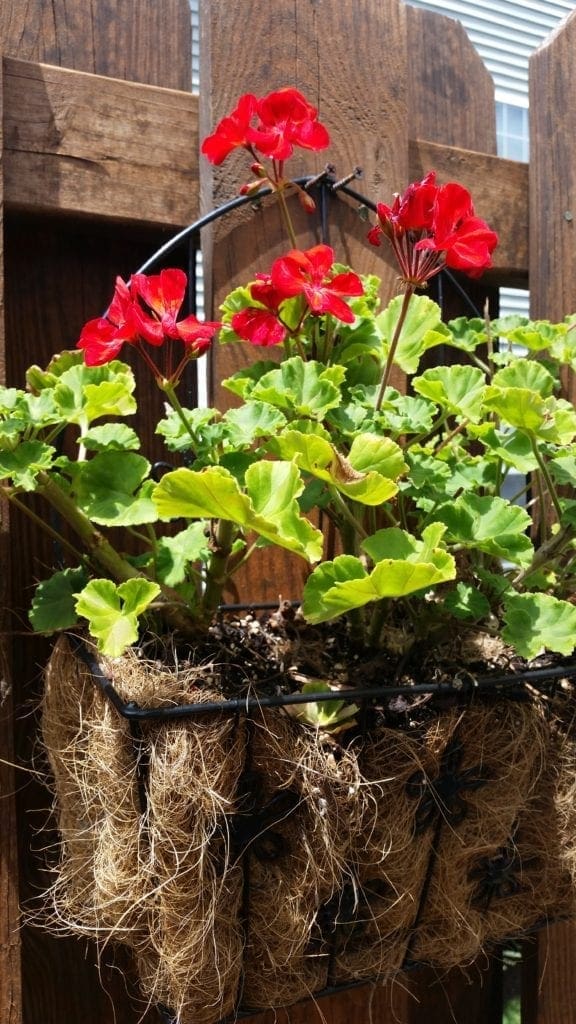Most recently updated April 19th, 2023
Estimated Reading Time: 20 minutes
Indoor plants are growing in popularity in American homes and workplaces, and also in places like hospitals, shopping malls, and hotels.
National Indoor Plant Week (September 16-22) was established to promote and increase public awareness of the importance of live plants in interior spaces.
Anyone can participate in this holiday. You can do your part with something as simple as giving a plant to a friend, or picking up a new houseplant for your kitchen or living room.
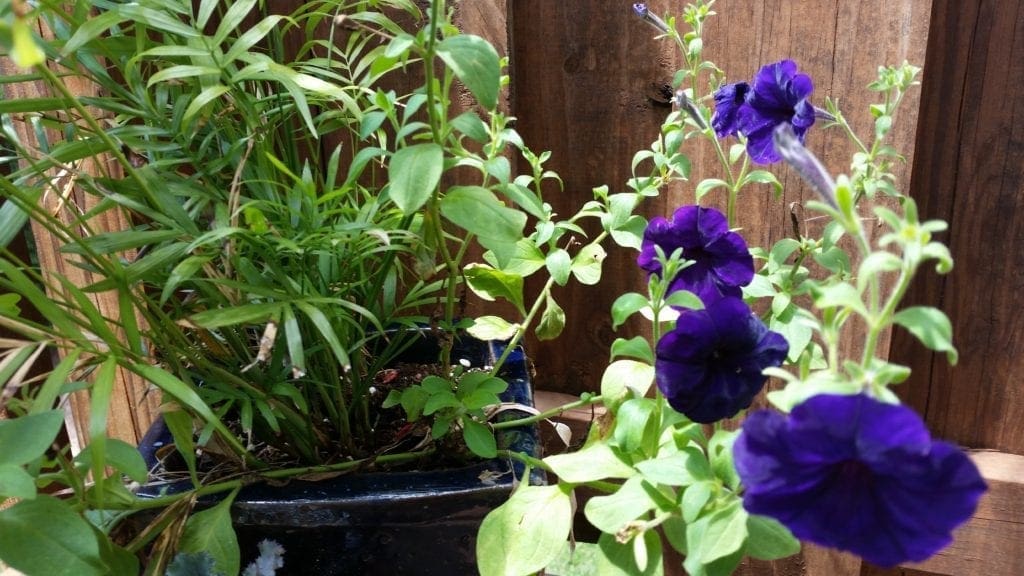
Houseplants and other indoor greenery improve your mental and physical well-being in a host of ways you’ve probably never thought about.
These days, with more people working from home, we’re spending more time inside our own homes than ever before.
By now maybe you’ve realized there’s a funky smell you’ve never noticed before, or the decor could use a little brightening – or maybe you’re just tired of watching screens and need to create something!
Plants can help clean indoor air, enhance your mood and create a soothing and cheerful living space.
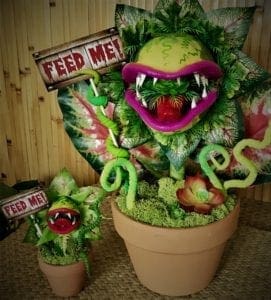
I knew a guy who grew 200 potted marijuana plants in the attic of his apartment building… But that’s not the kind of “mood enhancement” we’re talking about here 🙂
Growing indoor plants can really help alleviate loneliness and depression.
Caring for another living thing is very rewarding, especially when you see that living thing bloom and grow, all because of you!
No matter what your indoor space is like, there are many plants that would thrive at home with you – and be useful, too.
Some of my posts contain affiliate links. If you make a purchase through an affiliate link, I will receive a small payment at no additional cost to you. I do not get paid for recommendations, all opinions on this site are my own. See full Disclosure page here.
Ever wonder why you feel like you can breathe easier, focus better, and are simply happier in a room full of plants?
Studies Show That Indoor Plants:
-
-
- Clean Indoor Air
- Boost mood
- Increase productivity, concentration and creativity
- Reduce stress and fatigue
- Are medicinal and nutritious
- Are decorative
- Are therapeutic (and cheaper than a therapist)
- Are good luck!
-
Purchase Houseplants Online
If the stores near you have been closed by government mandate, or if you simply choose not to go out – you can order plants and gardening supplies and have them delivered to you at home!
Throughout this article, I’ve included photos of the recommended plants. Those plant photos are links to purchase the plants online.
Just click any “click for info” photo for ordering information.
I’ve also included photos of my potted plants and gardens because they’re beautiful. 🙂
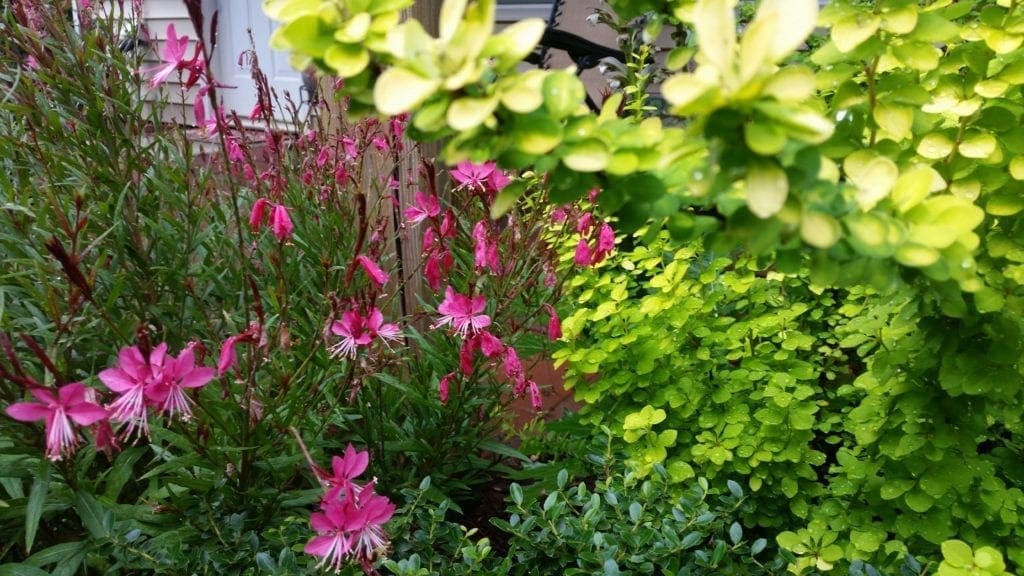
How Plants Fight Air Pollution
If you live in a modern city, you encounter pollution everyday.
It shows up on our skin, our hair and most of all, in the air we breathe. But pollution is not just outdoors – it’s also inside the places we work and live.
Prevent Sick Building Syndrome
The term “Sick Building Syndrome” describes symptoms experienced by otherwise healthy people working in large commercial buildings.
Symptoms include:
-
-
- Sudden allergies
- Irritation of the eyes, nose, and throat
- Headache, dizziness, and fatigue
- Respiratory and sinus congestion, and
- Nervous system disorders.
-
In 1989, Dr. Bill Wolverton, a leading scientist in NASA’s Clean Air Study, found that when sick building occupants go away for a given time, “the symptoms usually diminish, only to recur upon re-entry into the building.”
Sick Building Syndrome is caused by indoor air pollution.
Indoor air pollution is usually a result of toxic emissions from synthetic building materials, airborne mold, viruses, and pollutants.
Energy efficient construction, which makes spaces as airtight as possible, reduces the air circulation and introduction of fresh air into the space.

Toxins such as benzene, formaldehyde, trichloroethylene, xylene and toluene could be emitted into the air.
These toxins aren’t just found in big commercial buildings, they can be found in almost every home.
The good news is, we can improve our indoor air quality with houseplants.

Plants absorb these harmful toxins, break them down into gentler byproducts, and store them in the soil to use later for food.
How Houseplants Clean the Air
Research shows that indoor plants help rid the air of common toxins and indoor pollutants.

In fact, one study found that bromeliad plants remove more than 80% of six volatile organic compounds (out of eight studied) in a 12-hour period, while the dracaena plant removed 94% of acetone (found in nail polish remover).
According to Gary L. Altman, CRC, HTR, associate director of the Horticultural Therapy Program at Rutgers, “The air purification ability of plants depends on factors such as size of the plant, size of the indoor space, and amount of toxins in the air.”
He says 6-8 medium to large plants in a large room should be enough to make a noticeable difference in the air quality.
NASA Study
NASA scientist Bill Wolverton’s investigation in the 1980’s also looked into the ability of common houseplants to remove a type of air pollutant, called “volatile organic compounds,” or VOCs, from the air.

VOCs are regularly released by common household products such as drywall, house paints, nail polish, shampoo, and almost anything with a scent.
Their harmful effects can range from an itchy throat to nasopharyngeal cancer, and they can also be harmful to pets.

Unlike other types of air pollution, such as soot or pollen, VOCs can’t be filtered out of the air with a fine-grade filter.
This means that they can build up in sealed environments – such as apartments, hotels, laboratories or spacecraft.
For NASA, the problem was obvious.
The final results of these NASA studies on indoor pollution recommended 15-18 plants in 6-8 inch diameter containers to clean the air inside a whole 1800 sq ft house.
That’s roughly one plant per 100 square feet of floor space.
To help plants perform their best, they recommend keeping leaves clean and free of dust, and periodically taking them outdoors in natural sunlight to “recharge”.
Plants…In….SPACE!!

When NASA needed a cheap, easy way to filter the air on space stations — they chose the most common houseplants (at the time) to test.
When reporters wrote about the NASA study, they misinterpreted it as “these are the only plants that filter the air” as opposed to “all plants filter the air, but these are the only plants NASA had the time and budget to test”.
Plants for Air Purification
Here are some favorite air-purifying plants to choose from that would make a great addition to your home or office.
Snake Plant

This no-fuss tropical plant has thin, upright leaves with irregular banding that resembles the skin of a reptile.
Snake Plants have been shown to filter benzene, formaldehyde, trichloroethylene, xylene and toluene.
Pothos

Forgiving Pothos is a good choice for people will no plant nurturing skills and less than ideal growing conditions.
The Pothos has been shown to filter benzene, formaldehyde, xylene and toluene.
Rubber Plant

This popular variety of ficus has thick upright stems with glossy, oversized leaves that can store water in case of drought.
Rubber Plants have been shown to filter formaldehyde.
Bird’s Nest Fern

The Bird’s Nest Fern makes for a lovely indoor hanging plant.
Ferns have been shown to filter formaldehyde, xylene and toluene.
Philodendron

The Philodendron has a reputation of being one of the easiest houseplants to grow.
Philodendrons have also been shown to filter formaldehyde.
BARBERTON DAISY

The colorful Barberton daisy is an effective cleanser of the toxins formaldehyde, trichloroethylene, and benzene, found in a range of household materials from paints to synthetic fibres.
ALOE VERA

A healing aloe vera plant will soothe any kitchen burns, and also purifies the air of formaldehyde and benzene, found in varnishes, floor finishes, and detergents.
BROAD LADY PALM

The Broad Lady Palm is one of the few plants that can help reduce levels of ammonia that can be found in a range of cleaning products.
They are expensive to buy fully-grown so you might want to shop around for a smaller one or start from seed.
RED-EDGED DRACAENA OR DRAGON TREE

Trichloroethylene and xylene are amongst the pollutants fought by this spiky, slow-growing Dragon Tree plant.
The leaves’ bright red trim which add a flash of colour to your home.
WEEPING FIG

Popular houseplants since the Victorian times, weeping fig plants can help reduce household levels of formaldehyde, xylene, and toluene.
CHINESE EVERGREEN

The tropical Chinese Evergreen plant is proven to be an effective cleanser of formaldehyde and benzene, found in detergents and cosmetics.
Orchids

Orchids actually thrive on neglect, so don’t kill them with too much water and sunlight!
They filter xylene, a pollutant found in many glues and paints.
Orchids also respire and give off oxygen at night – so they’re great for the bedroom!
How Houseplants Make You Feel Good
Joy is the best reason to own house plants – not a marginal reduction in air pollution 🙂
Bringing plants into your home is about having something near you that’s alive, and that you care for.
Having that living connection affects your mood, whether or not the plants are cleaning your indoor air.
Potting plants or doing indoor gardening is a great activity to do with your kids, too, especially if you’re practicing homeschooling.
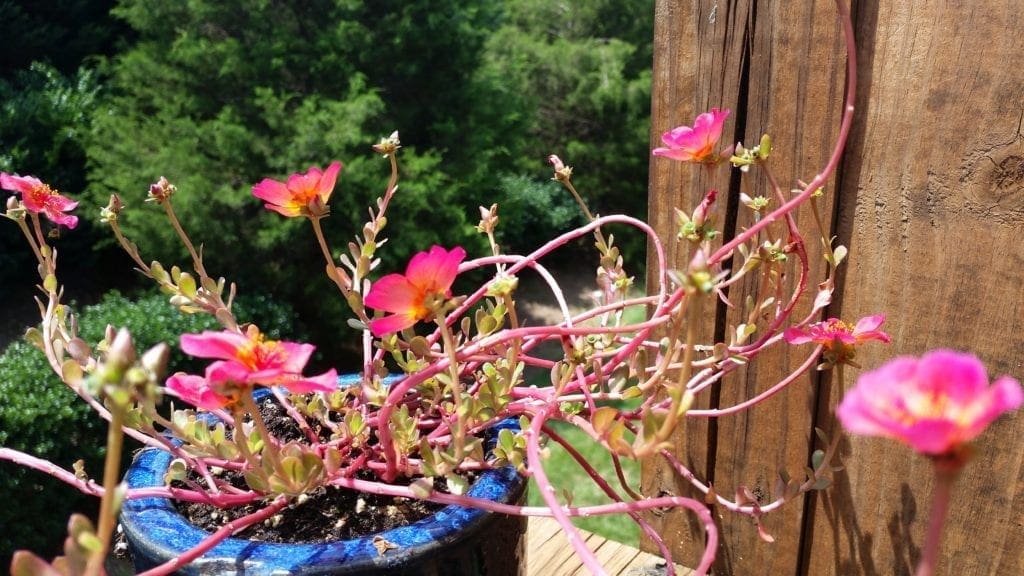
Boost Your Health
“We evolved on earth amongst the grasslands surrounded by trees and plants,” says John Beirne, HTR, horticultural therapy instructor at the New York Botanical Garden and superintendent of horticulture at Willowwood Arboretum.
If you’re looking for some plant ideas locally, a great place to go – and also take kids for an outing – is the JC Raulston Arboretum.
“It’s no wonder plants make us feel at home—for eons they’ve fed our bodies and our souls.”
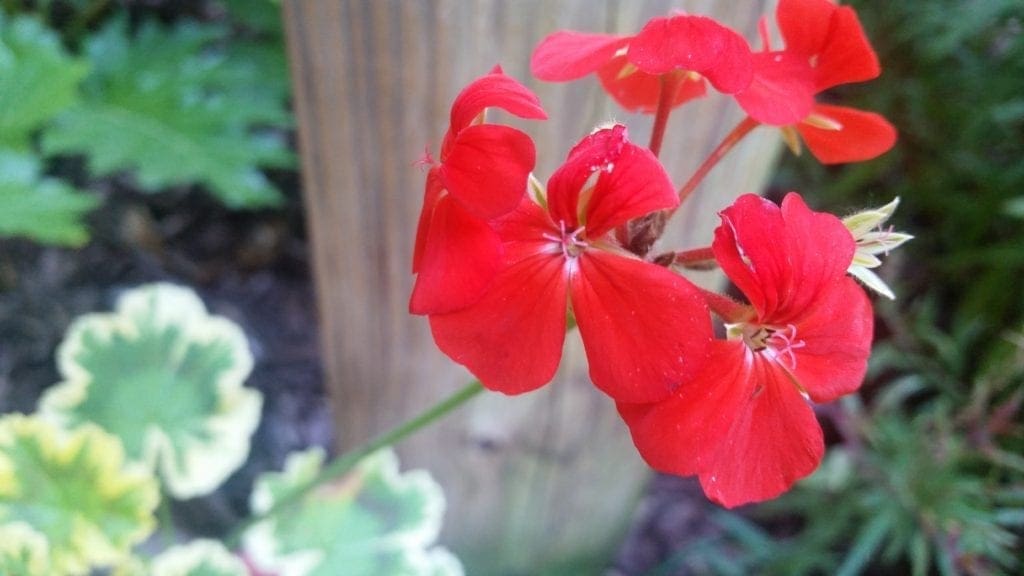
For example, one study found that when 28 new plants were placed in common areas of a heart and lung rehab center in Norway, patients with plants reported a greater increase in well-being than patients who didn’t have plants added to their space.
Houseplants Promote Healing

In fact, researchers at Kansas State University found that patients with plants in their rooms required less pain medication, had a lower blood pressure and heart rate, and felt less anxiety and fatigue when recovering from surgery than patients without greenery in their rooms.
Some plants even provide physical healing benefits. For instance, aloe vera can be used to heal sunburn and other skin irritations.
Boost Your Productivity
That ivy sitting on your desk could be giving your a brain boost.
A study by the University of Exeter found that employee productivity increased by 15 percent after plants were introduced to a previously bare office.
“Plants were once – and still are – essential to human survival,” says one expert.

“Today, this innate connection can be observed by an overall reduction of stress, which in turn effects an individual’s ability to be creative and focus on tasks.”
The Journal of Environmental Psychology published a study found that College students who studied an office with plants had a longer attention span than those who were in an office without plants.
Other research shows that when indoor plants are present:
-
-
- Performance at work increases,
- Staff well-being improves and
- Employees take less sick days.
-
Feel Accomplished and Connected
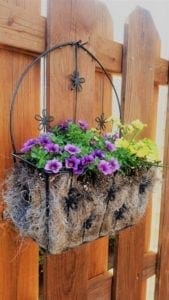
In yet another study, when residents in an assisted-living facility learned how to pot their own plants and care for them at home, their quality of life improved.
Researchers say the improvement could be due to a feeling of accomplishment, or even the companionship people felt with their plants – some said they talked and sang to them 🙂
“Any time someone takes ownership of something by doing it themselves, they exude pride in accomplishment,” says Gwenn Fried, manager of Horticulture Therapy at NYU Langone’s Rusk Rehabilitation.
“In my experience, anyone who plants something will then take better care of it and nurture it—being able to nurture is part of the human experience and brings joy.”
Another benefit of home gardening or potting outdoor plants is healthy exposure to sunshine.
PLANT AN INDOOR HERB GARDEN

Keeping houseplants, outdoor garden beds, and indoor herb gardens are all good ways to connect with Nature and have the joy of nurturing living things at home.
You can keep your kitchen supplied with healthy fresh herbs all year with varieties that thrive on a sunny windowsill or under grow lights.
For best results, give each herb its own pot so that you can customize care and give it room to grow.
Which Herbs Can I Grow?
Perennial herbs are easiest to grow from young plants that you buy at a garden center. You can also use small plants dug from the garden to bring indoors. Many herbs can be started from cuttings, too.
Where Can I Grow Herbs?
-
-
- In natural light: South-facing windows have the brightest light and most hours of sun during the short, cool winter days.
- Under grow lights: Full-spectrum growlights are ideal for all herbs. Place plants within a foot of the bulbs or follow the instructions provided with your lights.
-
The Best Herbs to Grow Indoors
Basil

A critical herb for cuisines around the world and a favorite pairing for tomatoes, basil is easy to grow indoors.
Pinch off individual leaves and add to salads, sandwiches and sauce. Make your own pesto.
Bay Laurel

The thick, flavorful leaves of this Mediterranean shrub are essential ingredients for soups and stews.
Pick individual leaves as needed or harvest a few from larger Bay Laurel plants and dry them for storage.
Chives

The spiky leaves of this onion-flavored herb add a mild kick to eggs, soups, and salads, and make pretty garnishes.
Use scissors to snip off individual leaves or give the whole Chives plant a “crew cut” to keep it tidy.
Mint

With dozens of flavorful varieties available, you could devote an entire garden to mint.
Choose from peppermint, spearmint, chocolate, orange, apple, banana and more.
Snip leaves and sprigs for tea and mixed drinks, salads and desserts.
Oregano

A must for Italian, Mexican, Central American and Middle Eastern cuisines, oregano is member of the mint family.
Strip the leaves from snipped stems and add to tomato sauces, meat, casseroles, soups and stews.
Parsley

Choose curly or flat-leaf for your kitchen garden.
Parsley adds bright color and flavor to soups, salads and fresh sauces.
It’s essential in tabbouleh, and delicious in pesto, stuffing, chicken, fish and vegetable dishes.
Rosemary

Just the fragrance from a few crushed rosemary leaves can lift your spirits and remind you of warm sunny days!
The needle-like Rosemary leaves are must-add herbs to chicken, pork, lamb, soups, potatoes and olive oil.
It’s also delicious in tomato and cream sauces.
Thyme

The versatile flavor of thyme make it a key ingredient in nearly every cuisine of the world.
Its tiny leaves and trailing stems give it natural houseplant appeal, too.
Plants for Calming
Sometimes, all you need to lighten your mood is a touch of nature in any space, especially when you live in a city.
While Stanford University researchers recently confirmed the mental health benefits of hiking or simply spending time outside, bringing the outside in can also be a good solution.
How Nature Helps
Even brief exposure to nature has been shown to make us more altruistic and cooperative – even just touching real foliage elicits an unconscious calming effect.
But some plants are more calming than others. The following five plants have been described as “living, breathing antidepressants.”
Consider bringing some of them inside to ease stress and anxiety!
Basil

Thanks to the compound linalool, basil smells delicious and can help reduce feelings of stress and anxiety.
Basil also emits oxygen for 20 hours a day.
English Ivy

This easy-to-care-for plant scores a nine out of 10 when it comes to cleaning the air.
Add English Ivy to your home to breathe a bit easier.
Boston Fern

This plant is another powerful air purifier, removing up to 1863 toxins per hour.
The Boston Fern is also recommended for added peace of mind.
Lavender

Whether in plant or essential oil form, lavender is one of the most widely researched anti-anxiety herbs out there.
Add a few sprigs of Lavender to your bedroom or try an oil diffuser.
Rosemary

This woody herb has been said to encourage inner peace, promote positivity, and ease depression and anxiety.
Crush some Rosemary leaves to release a soothing fragrance.
Houseplants and Home Decor
A holistic approach to wellness is more than diet, exercise, or taking a bunch of supplements.

The process involves creating the best environment for yourself at home, too.
“When designing a home for my clients, I consider every aspect of how they currently live and how they would like to live or feel,” says interior designer and feng shui specialist Amanda Amato.
“Our environments impact our lives and overall well-being. The colors, lighting, furnishings, decor, function, and layout, in our home all play a role in how we feel.”
Here are a few easy ways to include houseplants in a more wellness-centered home design.
Clear Your Mind
Whether you can recognize it or not, our environments affect how we feel, both positively and negatively.
“Negative emotions create stress and tension in our body and show up in a variety of ways such as anxiety, stomach aches, or stiffness in our shoulders to name a few,” says Amato.
We already know that some plants can filter the air of harmful chemicals, but what if they could do more than that?
According to Feng Shui principles, they can.
Feng Shui expert Marianne Gordon of Feng Shui With Me teaches about what other benefits plants might have in our homes, and where to place them to make the most of their positive effects.
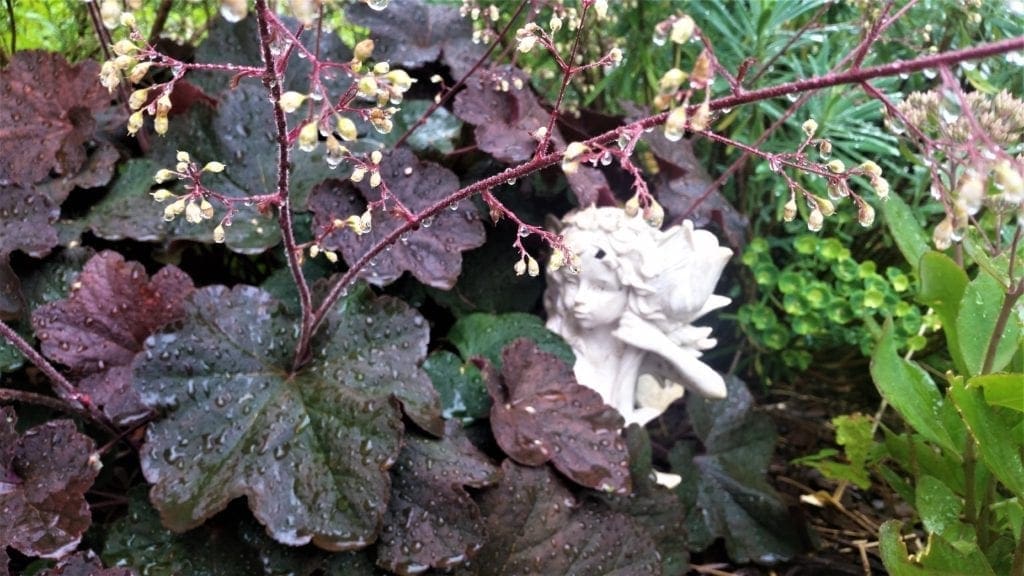
What Is Feng Shui?
Feng Shui is an age-old Chinese belief that our homes are a reflection of ourselves and that our environments (like home or office) should align with who we are, and where we’re going in life.
In Feng Shui, everything (even inanimate objects) has energy (or chi.) Arranging your home according to Feng Shui principles helps balance those energies and allow them to flow freely throughout your space.
Gordon explains that balancing the elements (like water, earth, and fire) inside our homes is important.
In the 21st century, our indoor spaces are predominantly filled with the metal element.
Plants—associated with the wood element—are believed to help adjust that balance.
The Best Plants for Your Home

That said, you should also avoid going overboard and having too many houseplants.
“In order to think and feel clearly, we need other elements in our lives (metal, water, earth, and fire), so don’t create a jungle that overrules your house,” says Gordon.
Where you put your plants can have an impact on your mental clarity.
Gordon suggests understanding your home’s bagua map (Feng Shui’s floor plan to create good energy in your home).

You can use this floorplan to help you decide where to put certain plants.
For instance, plants that support positivity are said to be most effective when placed in your Wealth or Prosperity corner.
According to traditional Feng Shui methods, this is the southeastern corner of your home, or by Western methods, the back left corner of your home (when facing the front door).
Fortunately, there are many plants that inspire positive and abundant energy. The plants below are some Feng Shui favorites to promote good luck and fortune.
Plants for Good Luck
Bamboo

Place a few stalks of bamboo in a vase full of fresh water.
For specific energy, place:
-
-
- five stalks for academic achievement and creativity (in your creativity area),
- seven stalks in your health and family area,
- eight stalks in your wealth area, and
- nine stalks for overall luck (you can place these anywhere, but it could also be in the center of your home.)
-
Don’t forget to change the water frequently.
Money Tree

For good luck, keep a potted Pachira Aquatica, also known as a money tree – especially during a big milestone such as opening up a new business.
Fern

Ferns are great in hanging planters, especially in corners.
Corners are thought of as ‘poison arrows,’ making you feel uneasy from the sharpness of the object or corner.
Use Ferns to hide corners and edges in your home.
Orchids

Orchids are recommended for several areas in your home, depending on the blossom color:
-
- White orchids can be placed in the children and creativity gua
- Pink orchids with two stems belong in the love gua
- Yellow orchids can go in the center and health gua
- Purple orchids belong in the wealth gua
Orange Tree
Sage Plant

Sage is a purifying plant that grows and grows, and will eventually give you enough leaves to make your own smudge stick.
Peonies

The Peony, with flowers in different shades of pinks and reds, is the most popular plant to attract romance.
Downsides to Keeping Houseplants
Even with all their natural beauty and health benefits, there are some drawbacks to raising and keeping indoor plants.
-
- Most indoor plants require frequent watering.
- They may develop molds, fungus or bacterial infection
- They need a caretaker if you go on extended trips
- Can be dangerous to small children and pets
NASA found that many common houseplants can clean the air, but if you suffer from allergies due to pollen or perfumes, indoor plants could cause you more harm than good.
When you set a houseplant in your home, you could be bringing those allergens inside with you.
Try consulting a florist or gardening professional to choose plants that don’t cause allergic reactions.
How you clean your home, and filter the air can also help alleviate any allergens from houseplants.
Toxic Black Mold

Most houseplants need a fair amount of water and are moist most of the time.
While these are ideal conditions for the plant, they’re also ideal conditions for toxic black mold spores to take hold.
As the name suggests, toxic black mold is dangerous and can cause symptoms from sinus congestion to memory impairment and body fatigue.
Solve this problem by keeping plants well lit and areas around plants well maintained.
Pests

One of the most common disadvantages to indoor plants is that they could carry insect pests.
To control the spread of pests from new plants to existing houseplants, quarantine new plants for a few weeks, and check them for pests before setting them free in other parts of the house.
Houseplants, Pets & Kids
If you have children or pets, be sure to know what plants are poisonous before bringing them into your home. Many tropical or exotic plants can be dangerous to your family members.
Though you can fix this by putting the toxic plants up out of reach, it’s better (and less stressful) to find plants that are safe to keep in the home.
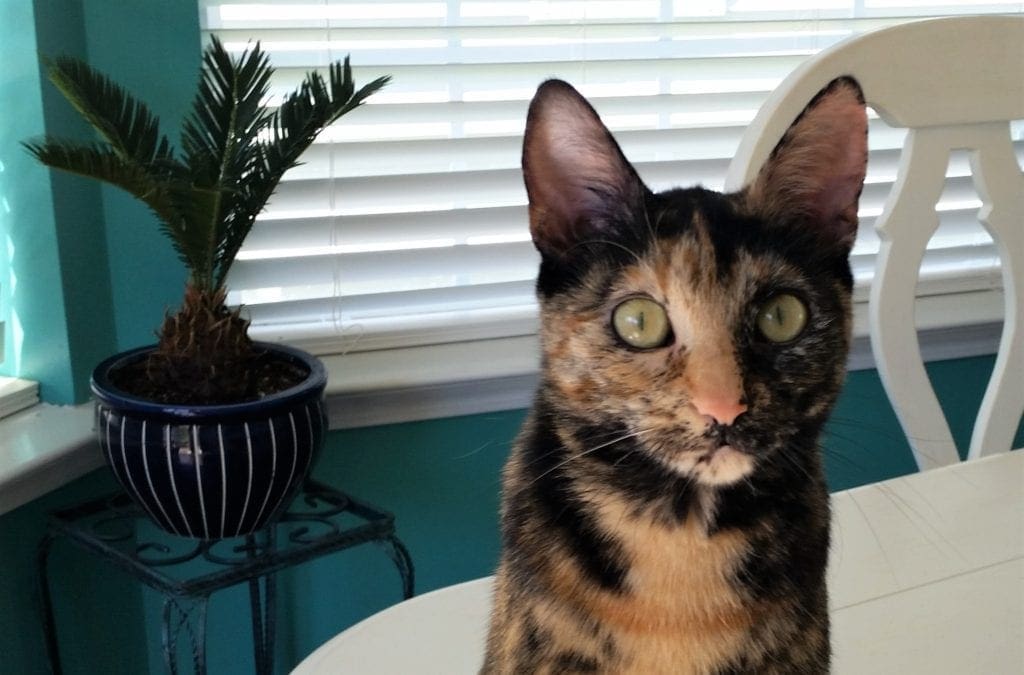
Pets and Plants Living Together
Many types of houseplants are poisonous to pets and should be kept out of reach.
Whether our pets want to taste, hide in, knock over or go to the bathroom on our house plants, they should be kept away from them.
Many cats and dogs turn to houseplants to satisfy their urge to graze, but this can be a dangerous hobby.
You can discourage both your cat and your dog from chewing on houseplants by spraying the plants and soil around them with a mixture of lemon and water.
Grow Grass Indoors for Your Pets
Cat Grass can be fed to cats, dogs, birds, reptiles, and small animals. (Adjust the serving size according to the size of your pet. ) It’s up to you whether or not to let your kids try it 🙂
Cat grass can be eaten directly out of the pot or clipped and added to food. It’s also really inexpensive and easy to grow!

You can use many different types of seed, but pre-packaged pet grass is typically oats or wheat. You should be able to find it easily in your local pet store.
Here’s what you’ll need to grow your own:
-
- a small pot to grow in
- potting soil
- cat grass seeds
- plastic wrap
- water
To plant your grass:
-
- Fill your pot with soil, stopping 1-2 inches from the top.
- Scatter a handful of cat grass seed over the top of the soil.
- Cover the seeds with about 1/4 inch of soil.
- Water the seeds until the soil is moist.
- Cover the pot loosely with plastic wrap and set in a warm and dark place.
- After 2-3 days you should see little sprouts coming up from the soil. (Keep the soil moist.)
When the grass sprouts are about a half inch tall, take off the plastic wrap and put the pot in a nice sunny place.
Keep the pets away for a while yet, so they don’t kill the grass.
It’ll take about a week to get it to a good 4-6 inch height, but after that, it’s a grass eating extravaganza!! 🙂

Start a Relationship
I freely admit I’m not a NASA scientist, a horticultural therapist, or even a Feng Shui practitioner. (Though I do reference all of these kinds of experts in this post.)

I did, however, spend a good part of my childhood maintaining an acre of our farm as our family kitchen garden.
We relied on our garden to give us most of the vegetables we needed until the next year’s harvest.
As an adult, I’ve always had houseplants indoors and gardens and pots in my outdoor spaces.
In fact, when I was younger and had less money for actual furniture, I had as many as 45 house plants inside my 1 bedroom apartment!
At this point, I’m a bit more moderate with only 13 plants inside my house. Of course, I also have furniture now…..
All this to say, I believe that if you develop a relationship with plants – whatever form that takes – it will be a healthy positive influence for the rest of your life!

I hope you’ve found this post helpful and have a lot of fun choosing and caring for your plants! 🙂
For more posts about staying healthy, check out the Wellness and Fitness page.
If you’re battling asthma and allergies, you might be interested in these other posts:
Asthma’s Effects on Mental Health
What’s the Best Medicine for Your Asthma?
Asthma and COVID-19: Are You at Higher Risk?
How Asthma and Allergies Change Over Time
Fight Asthma with Vitamins and Supplements
Eat to Breathe Easier – the Best Food for Asthma
Hiking With Asthma! A 3-Step Plan for Success
If you have a question drop me a note and I’ll reply as soon as I can.
Thanks for stopping by – see you next time! LJ
To Get New Idratherwalk Posts
sent directly to your inbox (how convenient!) Click this Button
If you like this post, please share it!


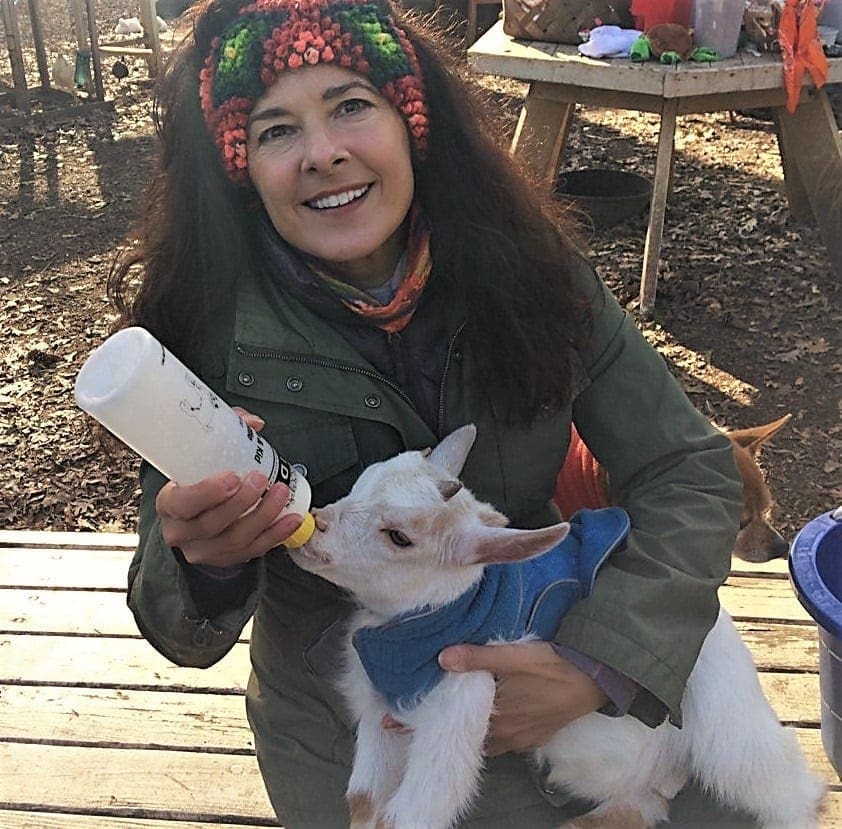
LJ has spent much of her free time as a single Mom – and now as an empty-nester – hiking in the US and around the world. She shares lessons learned from adventures both local and in exotic locations, and tips on how to be active with asthma, plus travel, gear, and hike planning advice for parents hiking with kids and beginners of all ages. Read more on the About page.

